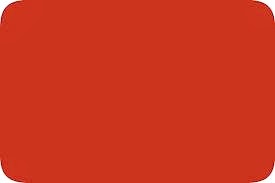How do you make gray? Well the obvious answer is to mix black and white.
But then how do you get a reddish gray, a bluish gray or a warm gray?
I was once commissioned to make a detailed color chart for a color consultant. That was when I learned how to make gray.
For those of you not in my age range, let me explain. Back in the 80's, everyone was getting "their colors done". You were analyzed as being one of the four seasons, as far as the colors that look best on you. The palette was based on your skin tones and the color wheel.
The left side of the color wheel is the cool colors, or the winter palette, and the right side is the warm colors, also known as the spring palette. But what about the warm muted colors of autumn and the cool muted colors of summer? Where do they get those colors?
The color wheel holds the key. Take any color. Let's take red, for example.
Okay start with red and draw a straight line down to the opposite side of the wheel and what do you find? Green. This is its complementary color, and here's the deal. Any two complementary colors will gray each other down. So start with red and add a little green and you get tomato red. See the difference? It is a grayed down version of red. Now if you continue to add green you will gray it down even more.
So now if you take white and add a bit of your grayed down red, you will get gray, but it will be a lovely shade of rich, vibrant, reddish gray, instead of the dull black and white mix.

So next time you want to paint tree bark, you will know how to make its beautiful muted warm color palette.
Complementary colors are harmonious when blended because they gray each other, giving a more natural effect.
What about yellow and purple, you ask? Yes, they are complementary colors and yes, mixed together they make gray. Here is a beautiful example of using complementary colors in a painting. It is called Dawn Beach by artist Fred Cuming.
The yellow of the sky is muted down with violet. The deep cool violet on the horizon is muted with its complement, yellow. The effect is soft and harmonious, a lovely blend of total opposites.
So how do you make gray? Black and white works. Or any two colors opposite each other on the wheel, plus white.






Comments
Post a Comment